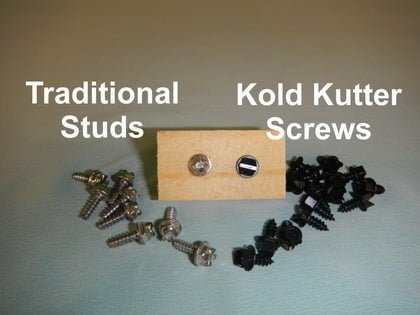Napoleon asserted an Army marches on its stomach. While the snacks stuffed into our fishing vests are essential, we need to pay the most attention to our feet; making boots the most significant piece of equipment to get right. We can be successful fly fishing with rods and reels ranging from a $25 Walmart starter kit to a $1,000+ custom setup, but neither will ever see a fish unless we can walk to the stream, and, once there, safely negotiate the challenges of the streambed.
While discussing safety is not interesting, every criterion for selecting a boot has a safety consideration. When purchasing your next pair, consider how you get to the stream (long hike or short slide into the water from a road), where you fish (in the water or on the shore), and the physical characteristics of the stream (fast moving or gentle).
Starting from the bottom, rubber or felt? While felt has significant traction advantages over rubber, the environmental negative is overwhelming. Felt does not dry quickly, and the transfer of invasive aquatic species has been laid, literally, at the feet of anglers transporting them from stream to stream; leading many states and Canada to ban felt soles. The other disadvantages of felt are it wears out quickly when hiking and loses traction in cold weather when ice and snow harden the bottom; adding weight at the same time.
Rubber is not traditional rubber any longer. Instead, the “rubber” material used on today’s boots mimics many of the grabbing characteristics of felt while adding durability and avoiding the species transport problem. If needed, studs provide additional traction on either felt or rubber. While the price of studs has come down, this is one area where avoiding a name brand saves a significant amount of money. Instead of spending $30 for 20 studs ($1.50 each), take a lesson from the adrenalin junkies who race motorcycles on ice. They routinely screw studs made by Kold Kutter into their tires to gain the traction needed to avoid death. The 3/8” or 1/2” lengths work fine for wading boots with a bag of 250 studs bargain priced on Amazon. At that low price, if they wear out or fall out, replacing them is no big deal, and the Kold Kutter grab pattern is much better than merely using generic self-tapping sheet metal screws (the other budget option).

To use studs, follow a few simple rules. First, pick a good installation pattern. Waderstuds.com did field tests and came up with two basic patterns you can review on their website. Second, be very careful walking on hard, smooth surfaces. Unless there is a crack for the stud to catch on, it is very easy to slip. Third, metal studs scrape and create more noise on the streambed than either bare rubber or felt; requiring more careful foot placement. Finally, never get into a boat or walk on a hardwood floor wearing studded boots!
While the sole is the most important part of the purchase decision, it is not the only factor. Consider the material used to create the uppers, the associated drainage system and how easily the boot laces. Look for uppers made of a lightweight, porous material that is also hydrophobic since fishing with a heavy boot is exhausting! Hydrophobic materials, like Gore-Tex, do not absorb water. Even though “hydrophobic” is a technical term, most manufacturers use it when describing the boot features – look for that word!
Assess the heel and ankle support. The quickest way to ruin a fishing trip is to turn an ankle or break a leg. Just like a hiking boot, the boot must hold the heel firmly in place to provide support and avoid blisters. At the same time, there must be room for the toes to move without touching the boot. When trying on the boot, verify the top has the appropriate padding for firm comfort. Confirm the tongue is either attached to the boot on both sides or is much wider than the gap when laced up to minimize sand and gravel intrusion. The boot should have a reinforced heel and toe since those parts experience the most wear scuffing against rocks.
Since water retention adds weight, check the drainage system. Is it obvious how water will flow out of the inside of the boot? Exercise the lacing system. Is the boot easy to lace up? Are the included laces durable? Once laced, is the boot comfortable to wear? Does it flex appropriately with each step?
Never purchase a wading boot wearing street socks. Since we use wading boots with stocking foot waders, put on a pair of neoprene socks when trying on the boot (borrow a pair off the rack). Understand how the manufacturer sizes the boot if purchasing over the Internet since some include the additional space for the thick neoprene and quote the street shoe size while others expect you to upsize to find the right fit.
For maximum flexibility, consider the removable sole system from Korkers. The Korker OmniTrax system has six interchangeable sole options including plain felt, various rubber, and studded options. Using the Korker system allows the angler to pick the right sole for hiking with the ability to change quickly once streamside.
YouTube has over 5,000 reviews of wading boots – check out a few to gain perspective and then shop smart! With the right boot, you can walk a million miles and be fresh and ready to fish upon arrival!



